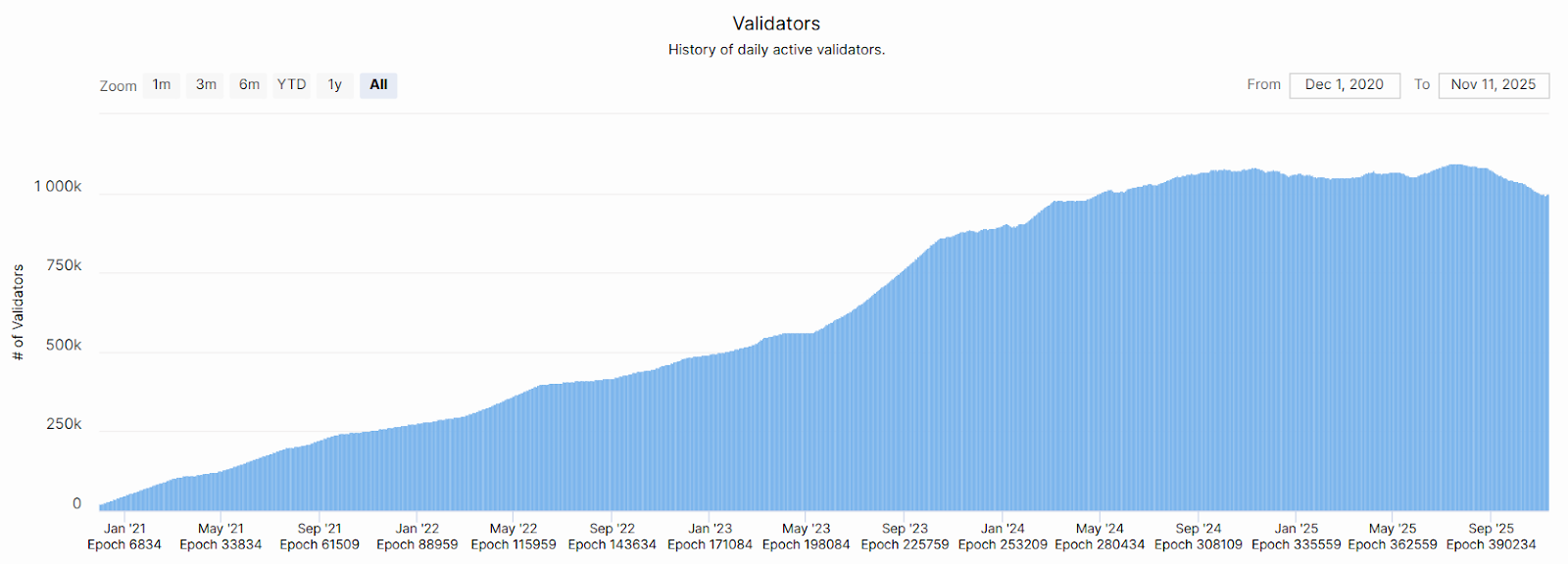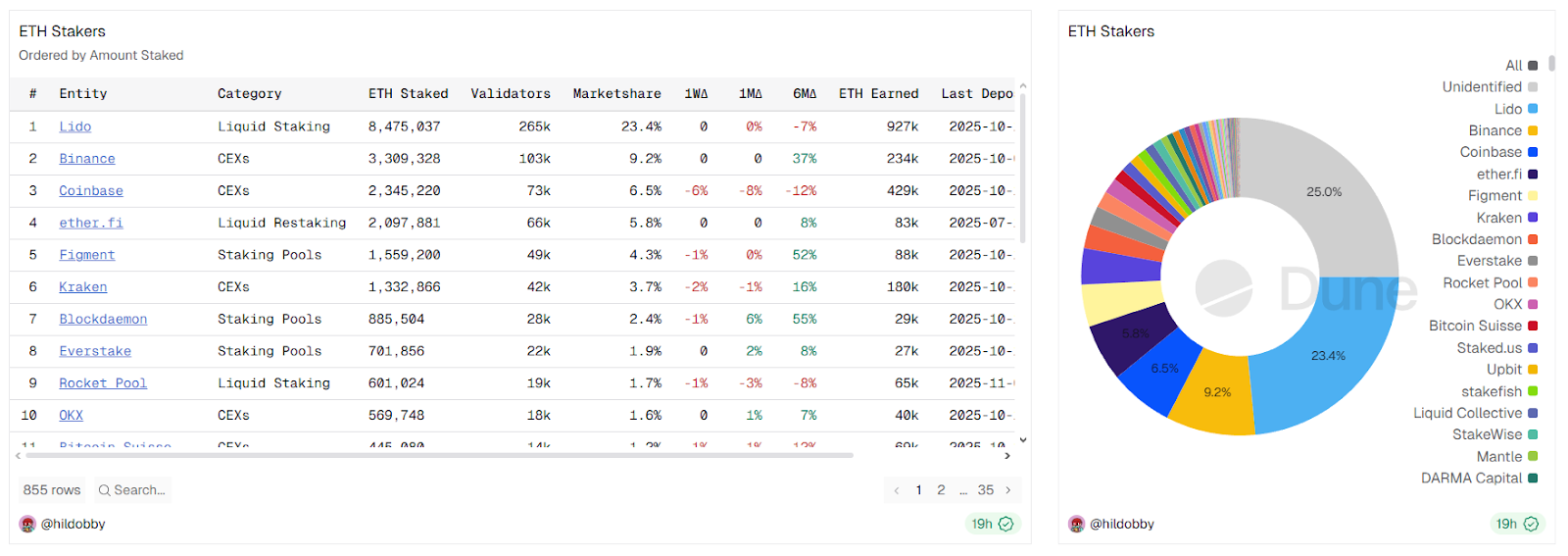Ethereum just crossed a psychological threshold: the number of daily active validators has dipped back under 1 million, a level last seen in late April. The reversal marks the first sustained pullback of this magnitude since the networks transition to proof-of-stake in September 2022. What looks like a simple decline is, in fact, a slow-motion reconfiguration of who runs Ethereums securityand why.
Why this matters
- Security composition is changing: fewer validators can still mean robust security, but operational independence becomes the real decentralization metric.
- Liquidity and latency: a month-plus exit queue alters risk management for operators and liquid staking providers, impacting supply dynamics for ETH.
- Economics driving behavior: softer staking yields and higher funding costs have turned leveraged staking from trendy to tricky.
- Market structure in flux: consolidation enabled by Pectras MaxEB may shrink validator counts while making large-scale operations more capital-efficient.
The numbers: back below one million
Beaconchain data shows roughly a 10% slide in daily active validators since July. As of Nov. 11, the count stands at 999,203, erasing months of steady growth and rewinding the clock to April 2024 levels. The move breaks the post-Merge up-and-to-the-right pattern that lulled many into expecting validator expansion to be linear.

Validators stake ETH to order transactions and secure the chain in exchange for rewards. Exiting isnt instantaneous: a protocol-level queue throttles how many operators can leave or join at once to protect liveness and security.
Queues cut both ways
Waiting to get out takes patience. According to ValidatorQueue, fully withdrawing staked ETH now takes around 37 daysa far cry from the roughly one-day turnaround seen in May. Ironically, the entry line is long too: about 1.2 million ETH is queued to be staked, with an estimated 22-day wait.

What creates both lines at once? Different cohorts with different timelines. Some are exiting to manage risk or take profit; others are entering with longer-duration mandates or to capture protocol and restaking yields. The queue mechanics serialize these choices into visible bottlenecks.
Market pulse: price, psychology, and profit-taking
ETH trades near $3,470 as of press time, roughly 25% off the late-July/ mid-August peak when it briefly printed a fresh all-time high around $4,946, edging past the November 2021 record. Year-to-date, ETH is up about 4% after a choppy run.

Profit-taking is part of the story. Clemens Scarpatetti of CryptoCrew Validators told The Defiant that long-term stakers appear to be unwinding after strong Q2Q3 performance, with liquid staking providers such as Lido contributing to heavy exit queues. Summers rally created an incentive to redeem, sell, or reshuffle positionsand the queue is the visible footprint.
Institutional reshuffle meets Pectras MaxEB
Scale matters. Alon Muroch, CEO of SSV Labs, characterized the prolonged exit queue as a predictable outcome when large operators move in size. He pointed to Kilns early-September decision to withdraw nearly all of its Ethereum validators over security concerns, an amount equating to roughly 4% of total staked ETH, or about $7 billion. Big operators often oversee hundreds or thousands of validators; when they pivot, the queue backs up.
Overlay that with Pectras new MaxEB rule and a different picture emerges: operators can consolidate up to 2,048 ETH into a single validator, replacing dozens of smaller validators. That can pull the raw validator count lower while streamlining operations, and paradoxically make future large exits more orderly. As Muroch noted, decentralization isnt a validator headcount contest; independence and diversity of operators are the real signal.
Yields, leverage, and the economics of participation
Staking rewards have cooled. Annualized ETH staking yield sits near 2.9% APR, down from around 8.6% in May 2023. Meir Rosenschein of DcentraLab told The Defiant that falling yields, paired with higher borrowing costs, have made leveraged staking strategies far less appealing. He expects participation to tilt toward larger, professional operators in the near term, with Pectras 2,048-ETH consolidation making that transition operationally easier. Translation: fewer, bigger, more optimized validators.
Lower yields reflect more than just competition: on Ethereum, rewards are sensitive to network activity (fees and MEV) and the total amount staked. As both fluctuate, so do operator incentives. When funding rates and basis turn, a crowded carry trade can quickly unwind.
Who holds the keys to staked ETH
Market share skews heavily toward a handful of providers. Dune Analytics data shows decentralized staking protocol Lido with more than 8.4 million ETH staked across roughly 265,000 validators, a market share north of 23%. Centralized exchanges remain pivotal as well: Binance accounts for about 9.2% of staked ETH, and Coinbase around 6.5%.

The concentration question wont go away. On one hand, consolidation can improve uptime, incident response, and client diversity if managed well. On the other, power clustering raises governance and censorship-resistance concernsespecially if top providers face jurisdictional pressure.
The decentralization debate and a DVT path forward
Theres a difference between many validators and many independent validators. Distributed validator technology (DVT) can help decouple those concepts by spreading key management and responsibilities across multiple parties. If adoption grows, Ethereum could tolerate lower validator counts without sacrificing resilienceand potentially improve it.
The paradox of queues: bullish or bearish?
Exits are elevated, yet so are entries. That duality hints at rebalancing more than flight. Shaul Rejwan of Masterkey VC framed the trend as churn rather than capitulationa maturing market optimizing capital and compute. It also suggests the exit queue may remain slow but orderly as redemptions and restakes cycle through.
What NodeWire is watching next
- Exit and entry queue durations on ValidatorQueue for signs of clearing or renewed pressure.
- Provider-level shifts: any further large-scale withdrawals or consolidations by institutional operators.
- Yield dynamics: fees/MEV and issuance interactions, and whether APR rebounds enough to entice smaller operators back.
- Concentration risk: market share evolution on Dune, plus any regulatory scrutiny that could reshape operator behavior.
- Pectra implementation details and timelines tied to MaxEB usage, and DVT adoption that could offset centralization concerns.
Bottom line
Ethereums validator count has pulled back, the exit line is long, and yields are lighter. But the trend looks less like decay and more like refactoring: profit-taking, institutional consolidation under new rules, and a recalibration of risk and reward. In the near term, expect fewer but larger validators. Over a longer horizon, advances like DVT may prove more important to decentralization and security than the raw validator tally itself.
Sources: Beaconchain; ValidatorQueue; Dune Analytics.
